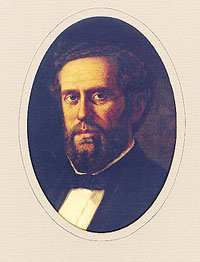John Ireland (politician) facts for kids
Quick facts for kids
John Ireland
|
|
|---|---|
 |
|
| 18th Governor of Texas | |
| In office January 16, 1883 – January 18, 1887 |
|
| Lieutenant | Francis M. Martin Barnett Gibbs |
| Preceded by | Oran M. Roberts |
| Succeeded by | Lawrence Sullivan Ross |
| Mayor of Seguin, Texas | |
| In office 1858–1858 |
|
| Member of the Texas House of Representatives | |
| In office 1872 |
|
| Personal details | |
| Born | January 1, 1827 Hart County, Kentucky |
| Died | March 15, 1896 (aged 69) |
John Ireland (born January 1, 1827 – died March 15, 1896) was an important leader in Texas history. He served as the 18th Governor of Texas from 1883 to 1887. During his time as governor, some big changes happened in Texas. The famous University of Texas was started. Also, work began on the beautiful Texas State Capitol building. Governor Ireland helped choose the pink stone from Texas to build it.
Contents
Early Life and Moving to Texas
John Ireland was born on January 1, 1827. His family lived in Hart County, Kentucky. His parents, Patrick and Rachel Ireland, had moved from Ireland. Even though John did not go to school for very long, he was very smart. When he was 18, he became a deputy sheriff in his county. At 24, he decided to study law and became a lawyer.
In 1852, John Ireland moved to Texas. He settled in a town called Seguin. There, he continued to work as a lawyer. He got married twice. First, he married Mathilda Wicks Faircloth. She passed away in 1856. The next year, he married Anna Maria Penn. They had three children together. In 1858, the people of Seguin chose him to be their mayor.
John Ireland and the Civil War
John Ireland believed strongly in slavery. He thought that people who had escaped slavery to Mexico should be brought back. He also strongly supported Texas leaving the United States. He was a delegate for Seguin at the Secession Convention in 1861. This meeting decided that Texas would join the Confederate States of America.
Ireland joined the Confederate army as a private soldier. He worked his way up to become a lieutenant colonel. During the American Civil War, he stayed in Texas. He helped patrol the border along the Rio Grande river. He also served along the Gulf Coast until the war ended in 1865.
John Ireland's Political Career
After the Civil War, John Ireland returned to politics in 1872. He was elected to the Texas House of Representatives. He led the main committee for the Democratic party. As a state lawmaker, Ireland supported creating the University of Texas at Austin. He also wanted low taxes for people. He believed that railroads should be regulated by the government.
In 1875, he became a judge on the Texas Supreme Court. Later that year, he helped write the new Texas Constitution. This new constitution changed the number of judges on the supreme court. Because of this, Ireland lost his judge position in 1876.
Running for National Office
In late 1875, Ireland decided to run for the U.S. Senate. His main opponent was the current Governor of Texas, Richard Coke. Some people accused Ireland of being part of the Know-Nothing party. They also said he was against the new state constitution. Ireland did not win this election. In 1878, he tried to run for the U.S. House against Gustav Schleicher. Again, he did not win.
Becoming Governor of Texas
In 1882, Governor Oran Roberts decided not to run again. John Ireland received the nomination from the Democratic party. His main competitor was G. "Wash" Jones from the Greenback party. Ireland won the election by more than 48,000 votes.
As governor, one of his first actions was to add an amendment to the state constitution. This amendment created a property tax. He also changed the policy of selling public lands.
The Fence Cutting War
Governor Ireland's land policy led to cattle ranchers buying huge areas of land. These ranchers started putting barbed wire fences around their own land. They also fenced off public lands they used for grazing without permission. This often blocked farmers and other ranchers from reaching water.
In early 1883, during a big drought, people started cutting the barbed wire fences. This led to fights between ranchers and farmers. This conflict became known as the Fence Cutting War. In 1884, Governor Ireland called a special meeting of the legislature. They passed a law allowing the Texas Rangers to help stop these fights. The Rangers helped calm some of the violence. That same year, Ireland was reelected for his second term as governor.
Building the Texas State Capitol
During Governor Ireland's time, construction began on the new Texas State Capitol building. He insisted that the building be made from Texas pink granite. Many people wanted to use limestone from Indiana. But Ireland believed in using materials from Texas.
In 1887, Ireland tried one more time to run for a U.S. Senate seat. He lost the race, and this ended his political career.
Later Years and Legacy
After leaving politics, John Ireland went back to Seguin. He continued to practice law. He invested his money in land and railroad stocks. However, during a financial crisis in 1893, he lost all his investments.
John Ireland passed away on March 15, 1896. He is buried at the Texas State Cemetery in Austin.
Images for kids


